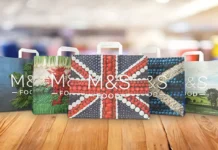THE digital technology agency behind Tetra Pak’s connected packaging experiences has revealed that brands which don’t embrace such innovation risk depriving themselves of important marketing opportunities and the chance to directly interact with customers.
The tech allows consumers to access additional content beyond a brand’s physical packaging through the use of QR codes. Information on everything from nutrition and product sourcing through to sustainability and company updates can be shared, as well as access to games and competitions.
The process also gives brands the ability to collect customer information in a GDPR-compliant way.
“It’ll eventually be normal to just look for the QR code and brands that don’t have it will be missing out,” Jenny Stanley, MD of Appetite Creative, told Packaging Scotland, before revealing that the business is now in talks with a ‘couple more’ packaging firms over the creation of a bespoke digital packaging offering similar to that of Tetra Pak.
“With Tetra Pak, it’s very important for them to offer to the brands the opportunity to get involved (via digital packaging),” she added. “We’ve actually created master apps so Tetra Pak can then localise the apps for their brands.”
As well as work with Tetra Pak, the Madrid and London-based agency has also worked with Ben and Jerry’s to develop a ‘fun and cheeky’ app accessed via product packaging which would give consumers a £2 voucher; helped to create a spooky app-based game during Halloween season with spiced rum brand Dead Man’s Finger; and a climate change quiz which featured on COP26 products.
With findings from Appetite Creative research revealing that 85% of packaging firms see digital packaging becoming increasingly important over the next 12 months and beyond, Jenny explained that the rise is down to a number of factors.
“I think prior to Covid, QR codes almost had their day, but they’ve proved themselves as being a useful way to use information,” she said. “The majority of consumers are having to use QR codes in their daily lives to order food in restaurants or track and trace, whereas before it would only really be on things such as boarding passes.”
Jenny added that a survey conducted by Statista in early 2021 revealed only 40% of those asked said they had recently scanned a QR code, whereas 65% said they had done so when the survey was redone in 2022.

Advancements in technology have also helped, with emerging platforms such as Crypto Currency, NFTs and the Metaverse making brands think more about merging real life with the digital world.
Furthermore, Jenny added that the days of having to install third party QR code scanners on phones are long gone, with most being able to read them via the pre-installed camera phone.
All this, however, doesn’t guarantee that a consumer will instinctively scan a QR code. Prompts are still required on the physical packaging. “If you’re looking for a checklist, the first would be making sure the QR code is big enough to see,” Jenny explained. “Even though QR codes can work at 1cm x 1cm, you really want to get 2cm x 2cm as it’s big enough for people to see.
“The second thing is, on products such as fruit juices and milks, (to) have a secondary call to action – for example, on the straw area, a little message reading: ‘have you scanned the QR code?’ We know the consumers are going to be looking at the area when they put the straw in.
“The third thing is moving away from the design itself and just making sure you’ve got communication around it – so talk about it on social media, in store at point of sale, and on any mailing lists.”
Jenny expects digital packaging to become the norm across all categories and age groups, not least because it creates a unique opportunity for brands to communicate with their particular audience.
She cited an example where the firm helped a bank provide information to customers approaching retirement age about wealth and investment planning. Other firms will be focused more on discussing sustainability or engaging with their consumers to help them understand certain elements of a brand.
“It’s really about the objectives and then finding the right type of concept and I think connected packaging is for every brand,” Jenny said.













